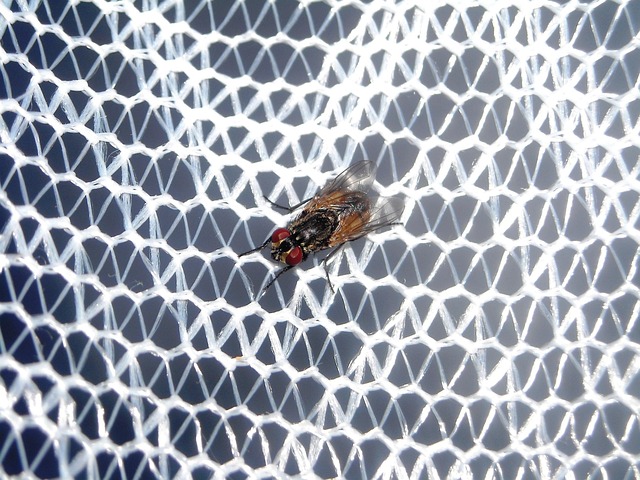
Mosquito Net Protecting Birds and Insects in Natural Habitats
In many wetlands and forest edges, a simple, often overlooked piece of fabric is quietly working to preserve the balance of life. The humble mosquito net, when used thoughtfully by conservationists, serves as a shield not only for humans but also for the feathered and insect inhabitants that share these environments. By creating a barrier that limits the entry of disease‑carrying mosquitoes while leaving space for birds and beneficial insects to thrive, the net becomes a tool of ecological stewardship.
Why Mosquito Nets Matter in the Wild
Mosquitoes are notorious vectors of numerous pathogens that can affect both wildlife and human communities. Avian malaria, transmitted by certain mosquito species, has devastated native bird populations in places like Hawai‘i and the Galápagos. Similarly, insects such as the Asian tiger mosquito spread viruses that threaten pollinators and amphibians. Protecting these species requires more than vaccines or pesticide spraying; it demands habitat modifications that keep mosquitoes away while allowing other organisms to pass unhindered.
- Reduced transmission of avian diseases.
- Enhanced breeding success for native birds in high‑risk zones.
- Maintenance of pollinator activity essential for plant reproduction.
Design Principles for a Wildlife‑Friendly Net
Creating a mosquito net that respects the needs of birds and insects involves careful material choice and structural planning. The netting should use fine, durable fibers that trap mosquitoes without hindering smaller arthropods or allowing larger birds to get stuck.
“The key is to balance mesh size: small enough to keep mosquitoes out, but large enough to permit the free flow of light insects that pollinate nearby flora,” notes Dr. Elena Marquez, a field ecologist involved in net deployment projects across Costa Rica.
Installation Techniques in Sensitive Habitats
When placing mosquito nets in natural settings, practitioners must follow procedures that minimize disturbance. Nets are often anchored to existing tree branches, stone pillars, or low‑profile poles, avoiding the installation of new invasive structures. The following steps outline a standard approach:
- Identify high‑density mosquito breeding sites, such as stagnant ponds or marshy ground near bird nesting areas.
- Select a netting material with a mesh size of 1–2 mm, adequate for most mosquito species yet permissive for pollinators.
- Secure the net using biodegradable ties or removable clips so that the habitat can be restored if needed.
- Check for gaps around the base and near any openings; these can become inadvertent entry points.
- Monitor the structure over time, replacing any damaged sections promptly to maintain effectiveness.
Impact on Avian Populations
Field studies in Hawaii’s highlands show a significant drop in mosquito abundance near net‑protected sites. One research team reported a 65 % reduction in the local mosquito population within the first month after net installation. Concurrently, the nesting success of endemic honeycreepers increased by 48 %, a clear indicator that the nets effectively lowered disease pressure without impeding the birds’ access to their nesting sites.
Beneficial Insects and Pollination
While mosquitoes are blocked, the nets allow the passage of pollinating insects such as bees, butterflies, and beetles. Because the mesh is large enough to let these creatures through, nectar flow remains uninterrupted. This continuity supports plant reproduction and preserves the integrity of the food web. Moreover, the nets can serve as a subtle habitat enhancement, offering micro‑shading that reduces heat stress for delicate insect species during peak sun hours.
Long‑Term Ecological Benefits
Beyond immediate disease reduction, mosquito nets contribute to broader ecosystem resilience. By safeguarding birds that prey on mosquitoes, nets indirectly control mosquito numbers, creating a natural feedback loop. The maintenance of healthy bird populations also supports seed dispersal and vegetation management, reinforcing habitat quality. In aquatic ecosystems, fewer mosquitoes mean lower mosquito larval presence in breeding pools, reducing the ecological footprint of human activity on these delicate waters.
Community Engagement and Education
Deploying mosquito nets in community parks or rural wetlands offers an educational platform. Local residents and school groups can observe the nets in action, learning about vector control, biodiversity, and the importance of non‑chemical management strategies. Workshops often include hands‑on demonstrations of net assembly, fostering skill development and stewardship values among participants.
Challenges and Future Directions
While the mosquito net proves to be a versatile tool, several challenges remain. In dense foliage or heavily shaded areas, nets can become tangled, creating hazards for birds. Climate change may alter mosquito behavior, demanding adaptive net designs that account for new breeding habitats. Researchers are currently exploring smart nets embedded with UV‑reflective coatings that repel mosquitoes yet remain visually indistinguishable to birds, thereby reducing visual clutter.
Research Initiatives
Ongoing projects in the Amazon Basin aim to test mosquito nets in large, open wetlands where the interplay between water bodies and mosquito populations is complex. Preliminary data suggest that netting can reduce mosquito densities by up to 70 % while keeping water levels stable. Such findings pave the way for scaling up net deployment in other tropical regions facing similar vector‑borne disease challenges.
Conclusion
The mosquito net, a staple of personal protection, has emerged as a quiet guardian of biodiversity. By strategically deploying fine‑mesh nets in natural habitats, conservationists can curb disease vectors without disrupting the life cycles of birds and insects. As we face escalating environmental pressures, integrating such low‑impact tools into broader ecological management plans offers a hopeful path toward healthier, more balanced ecosystems.


